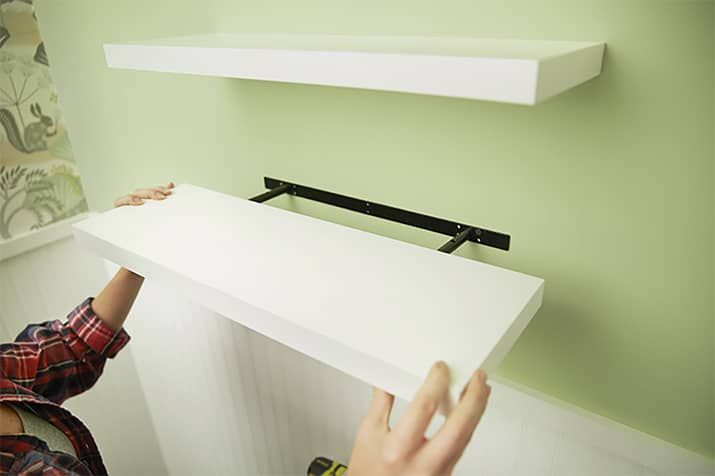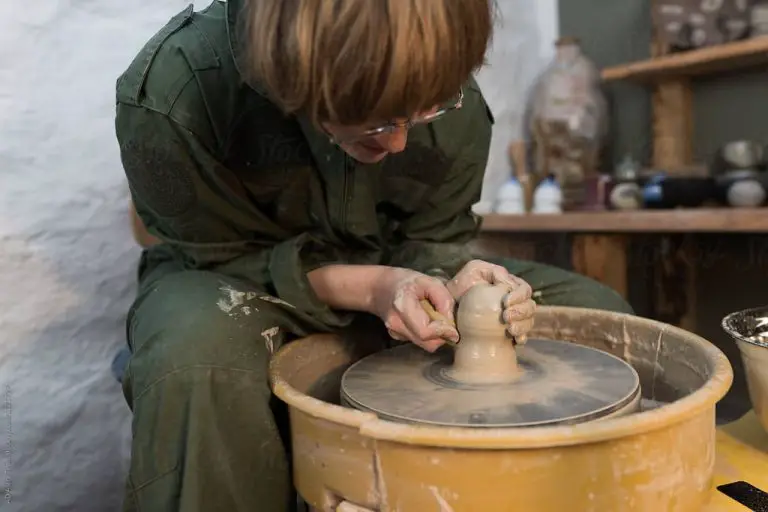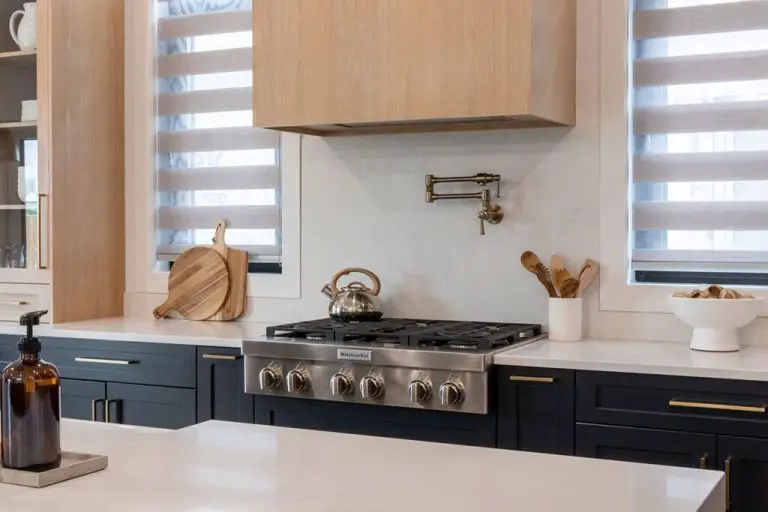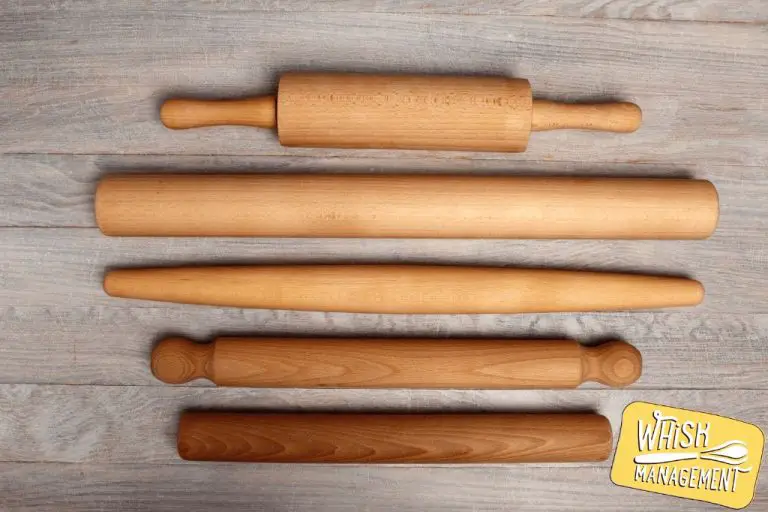How Do You Hang A Shelf That Doesn’T Have Brackets?
Installing shelves that don’t have built-in brackets can seem daunting. Without those handy brackets securing the shelf to the wall, how can you be sure it will stay up and support the items you want to display or store? While it may seem tricky, there are effective techniques for securely mounting bracketless shelves. This article will provide a step-by-step guide to hanging any shelf, with or without brackets. We’ll cover assessing your shelf and wall, purchasing the right hardware, locating studs, installing mounting hardware, prepping and installing the shelf itself, adding decorative touches, styling tips, care and maintenance. With the right approach, you can hang sturdy, stylish shelves that will enhance your space.
Assess the Shelf and Wall
Before installing a shelf without brackets, it’s important to assess the shelf itself as well as the wall you plan to mount it on. Look at the size, weight and type of material the shelf is made of. Shelves come in a variety of materials like wood, glass, metal, and laminates (see https://www.practicaldiy.com/carpentry/shelving/shelf-materials.php for common shelf materials). The dimensions and weight capacity needed will determine what type of shelf and mounting method to use.
Next, consider what will be stored on the shelf. Will it just be decorative items or books? Or do you need to support heavier items like appliances or bins? This will impact how you mount and support the shelf.
Finally, examine the wall you want to install the shelf on. Determine if wall studs are available to attach into. Studs provide the strongest support. If no studs are present, you will need an alternate mounting method like drywall anchors or toggle bolts (see https://www.diydata.com/carpentry/shelving/shelf-materials.php for more on mounts).
Doing this upfront research will ensure you select adequate shelf material and mounting hardware.
Purchase Appropriate Hardware
There are several hardware options for mounting shelves without brackets. Some popular choices include:
- Toggle bolts – These provide a very secure grip and can hold heavy loads. They work by inserting through a drilled hole and then the wings open up on the other side to anchor it in place (source).
- Molly bolts – Also known as hollow wall anchors. They work well for anchoring into drywall by using a metal sleeve that expands inside the wall. Great for lighter loads (source).
- Threaded drywall anchors – Screw these into drilled holes for lightweight items. The ridged sleeve grips the drywall when the screw is tightened (source).
- Hollow wall anchors – Similar to molly bolts, but with a ribbed metal sleeve that grips the inside of the drilled hole (source).
Consider the weight of the shelf and items being held to determine required load capacity. For lighter floating shelves, threaded drywall anchors around 50 lbs capacity should suffice. For heavier shelves up to 100 lbs, hollow wall anchors are a good bet. For the most heavy duty needs such as large bookshelves, choose toggle bolts rated for several hundred pounds.
The size of the hardware should match the thickness of the shelf material, typically choosing between 1/4″, 3/8″, or 1/2″ screws. Molly bolts and hollow wall anchors are available in various diameters as well. Pick hardware sizes that will secure firmly into the shelf without splitting the wood or poking through (source).
Mark the Mounting Locations
Before hanging the shelf, it’s important to properly mark where the mounting hardware will go. Proper spacing and alignment ensure the shelf will be securely mounted and level.
If mounting to a wall with studs, it’s best to locate them and mark directly on the studs. Studs provide the most secure mounting base. You can locate studs using a stud finder, magnets, or by tapping along the wall and listening for denser areas where studs are likely located. Mark the center of the studs with a pencil.
If not mounting into studs, choose appropriate anchors for the wall material. Space the mounting points evenly along the shelf’s length and make sure they align horizontally. Use a level tool to mark a straight, level line guiding the mounting point spacing and alignment.
Getting the initial mounting points perfectly level is crucial. Take time to measure and mark carefully, as this will make installing the shelf much easier and ensure it hangs neatly on the wall.
Install the Mounting Hardware
The key to securely mounting your shelf is properly installing the right hardware for your wall type. Follow these step-by-step instructions for various hardware options:
Toggle Bolts
Toggle bolts, also called toggle anchors, are ideal for mounting shelves on hollow drywall. Here’s how to install them:
- Using a drill bit slightly smaller than the toggle bolt diameter, drill holes where you’ve marked on the wall. Drill through just the drywall layer.
- Fold the wings on the toggle bolt and insert through the hole. The wings should open up and secure on the back of the drywall.
- Slide the bolt through the shelf bracket and thread the nut on a few turns. Keep pressure inward as you tighten so the wings stay flush against the wall.
- Tighten the nut until snug. Avoid overtightening as this can damage the anchor or drywall.
Required tools: Power drill, drill bits, adjustable wrench. Be sure to check for pipes and wires before drilling holes.
Hollow Wall Anchors
Hollow wall anchors, also called molly bolts, work well for mounting lighter shelves on drywall. Follow these steps:
- Drill a hole slightly smaller than the anchor diameter in the mounting location.
- Tap the anchor gently into the hole until the flange is flush with the wall.
- Slide the screw through the shelf bracket and into the anchor sleeve. Tighten with a screwdriver until snug.
Safety tip: Avoid overtightening as this can damage drywall. Required tools: Power drill, drill bits, screwdriver.
Be sure to check for pipes and wires inside the wall before drilling. Use extreme caution and consult a professional if unsure.
Prep and Mount the Shelf
Once you have the mounting hardware installed, it’s time to prep and mount the shelf. Proper preparation is key for getting a smooth, attractive finish on your shelf.

Start by sanding the shelf lightly with 120-150 grit sandpaper to remove any splinters or rough edges. Make sure to sand in the direction of the wood grain. If desired, apply a wood stain or sealer to give the shelf extra protection and your desired look (see this source). Let the stain or sealer dry fully before mounting.
When you’re ready to mount, carefully lift the shelf up and position the shelf brackets or standards into the holes. You may need a helper or small step ladder for this part. Slide the shelf in fully so it rests securely atop the brackets. Screw through the underside of the shelf into each bracket for added stability if there are pre-drilled holes (see this guide).
Double check that the shelf feels firmly supported by the brackets and is level. Add decorative elements like bookends or plants to style the shelf before loading with items.
Add Decorative Touches
Once the shelf is securely mounted, there are plenty of ways to add decorative touches to make it look unique. Consider adding trim pieces, brackets, or molding around the edges of the shelf to frame it in. Decorative brackets or corbels underneath can lend a more finished look, and help highlight the shelf as an intentional design element (see options at https://www.touchofclass.com/wall-shelves/c/20406/).
Painting or staining the shelf is another easy option to match your room’s decor. Go for a bold color to make the shelf pop, or opt for a natural wood stain in a shade that complements your existing furniture and accents. For a fun look, consider doing an ombre paint effect that graduates from light to dark across the shelf.
To decorate the shelf itself, add framed photos, art, and accessories like vases, accent books, candles, and plants. Curate the objects based on color, texture, height, and style for a cohesive look. Rotate out the accessories seasonally to keep it fresh. LED strip lighting underneath is another idea to highlight and illuminate your treasures. The options for personalizing the shelf are endless!
Style the Shelf
Once your shelf is securely mounted, it’s time to style it with your favorite decor. When styling a shelf, think about creating visual interest through using items of varying heights, textures, and colors. Mix practical storage solutions like baskets with decorative accents. Change things up seasonally to keep your shelf looking fresh.
Some ideas for shelf styling include:
- Books – Stack horizontally or vertically for different effects. Organize by color or subject.
- Plants – Add greenery with potted plants or small trays of succulents. Herbs can look nice too.
- Baskets – Great for corralling smaller items. Use different sizes and materials.
- Frames – Display meaningful photos, art, or other mementos.
- Sculptures – Small statues, vases, or other unique objects make for interesting focal points.
- Candles – Create a relaxing vibe with candles in various shapes, sizes and scents.
Get creative with shelf styling by using risers to add height, or filling baskets with faux flowers, shells, or other small decorative items. Make the most of vertical space by staggering items from tall to short. Always keep functionality in mind too – your shelf should still be usable for storage and display. With some thoughtful styling, your shelf can become a beautiful focal point in any room.
For more shelf styling inspiration, check out: https://www.pinterest.com/alicewingerden/shelf-styling/ and https://www.kathykuohome.com/blog/7-secrets-to-styling-your-shelves/
Care and Maintenance
Shelves like all display areas in the home require some routine care and maintenance to keep them looking fresh and prevent any issues down the road. It’s important to avoid overloading shelves as this can lead to sagging, damage, or worse – collapse. Shelves function best when you distribute weight evenly across them and avoid placing extremely heavy objects on any single spot. A good rule of thumb is to not exceed the weight limits recommended by the manufacturer.
Dusting and cleaning shelves periodically will also go a long way. Give shelves a quick wipe down with a microfiber cloth or duster once a week to remove any surface dust and dirt. For deeper cleaning, use a mild soap and water solution. Be sure to fully dry shelves afterwards. Avoid using harsh chemicals or abrasive cleaners.
You’ll also want to periodically inspect the mounting hardware, brackets, and connections to check for any loosening or damage. Tighten hardware as needed. If you notice cracked brackets, stripped screw holes, or excessive sagging, it may be time to reinforce or remount the shelf.
With proper care and maintenance, your mounted shelves will stay beautiful and fully functional for years to come.
Conclusion
Mounting a shelf without brackets may seem daunting, but following the key steps outlined in this guide will ensure a successful installation. We walked through assessing the shelf and wall, purchasing appropriate hardware, marking mounting locations, installing hardware, prepping and mounting the shelf itself, adding decorative touches, and tips for styling and caring for the shelf.
If you need additional guidance, there are many helpful online resources and videos that provide visual instructions for bracketless shelf mounting. Don’t hesitate to reach out with any questions you may have along the way.
With the right preparation and materials, you can hang a sturdy, stylish shelf in your home without brackets. We hope these instructions gave you the confidence to tackle this project yourself. Let us know if you have any feedback on this guide or suggestions for future content!





